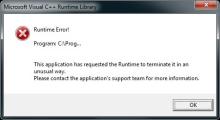The go to application framework for many small businesses is approaching a juncture. The last release of Microsoft Access will continue to be supported by Microsoft until Oct 13, 2026. If your organization has a version older than 2021 it already is out of support. The risk is that as long as Access is running on a physical desktop and not supported it is subject to breaking because of an OS update. This makes owning Access a risk worthy of future state discussions. What does a business owner need to think about at this point?
The future state of Access on a physical desktop can be segmented into three categories Freeze, Upgrade and Rewrite.
Freezing an application is done by deploying it to a virtual environment that never changes. Therefore, if nothing changes it will continue to function. Lets look at one option. Azure Virtual Desktops are Windows desktops of various versions that could in theory run any version of Access on the desktop forever. There is a caveat that rights to access the application in a virtual environment will need to be addressed. So a business may have additional deployment costs around joining their AD account to Azure which will require the services of a skilled professional.
Is there benefit to freezing? Azure Virtual Desktop runs around $32 user/month with an existing Microsoft 365 license. Without a M365 license the cost jumps to around $140 user/month. The cost can be lowered by purchasing 3-year reserves that bring the price down to around $54 user/month. So a business working on physical desktops can freeze critical Access applications at around $54 user/month run-rate. This could be a good option for transitioning to a long-term solution.
Freezing an application has benefits from Disaster Recovery perspective since multiple copies of the application can be deployed on Virtual desktops across different data centers.
Upgrading Access on the desktop may be the right future state for some organizations. What looks to be the path of least resistance is switching to a M365 license then leveraging tools accessible under the license to upgrade older Access desktop applications. The M365 runtime in most cases supports Access 2010 and newer. M365 has helpful migrations tools such as those to publish older Access application to SharePoint. Once published an Access application becomes a SharePoint site.
Is there benefit to upgrading? M365 Business Standard runs at $13 user/month. So if your business has the SharePoint infrastructure already built out this looks to be a low cost approach to migrating older Access applications and gaining security benefits provided from the M365 environment.
Rewriting an Access application is the best approach when the application supports critical business capabilities. Critical applications need consideration for performance, cost of ownership, security, compliance and disaster recovery. The best practice for an older Access application is to replace the database with SQL and the front-end with a low code platform.
This approach should be road mapped into two main parts being replacing the database and then replacing the front-end.
Replacing the Access database with SQL if fairly straight forward, but will require professional services. For example, we worked on a future state roadmap for a customer that involved an Access application with 80 tables. Converting it to SQL called for 1 skilled professional and 4 weeks of time which came out to around $60K. However, this process should be seamless to users and have minimal impact to the business.
Replacing the Access front end will require a skilled professional as well as a dedicated UAT group. The Access front end future state should target low code platforms such as OutSystems. However, low code does not mean low cost, but it does mean more benefits in the case of an Access application rewrite. OutSystems costs around $1500/month. It does seem to be a lot of money for an Access application rewrite, but the Access application is most likely in desktop environment without a DR plan, with minimal security measures and not much consideration for regular backups. Low code platforms such as OutSytems are deployed into infrastructure with DR, security and backups built into them which can be worth the expense depending on the organization.
Some organizations may already be one Windows update away from losing their Access Runtime. Start planning for its retirement today and reach out to us to roadmap a future state.

